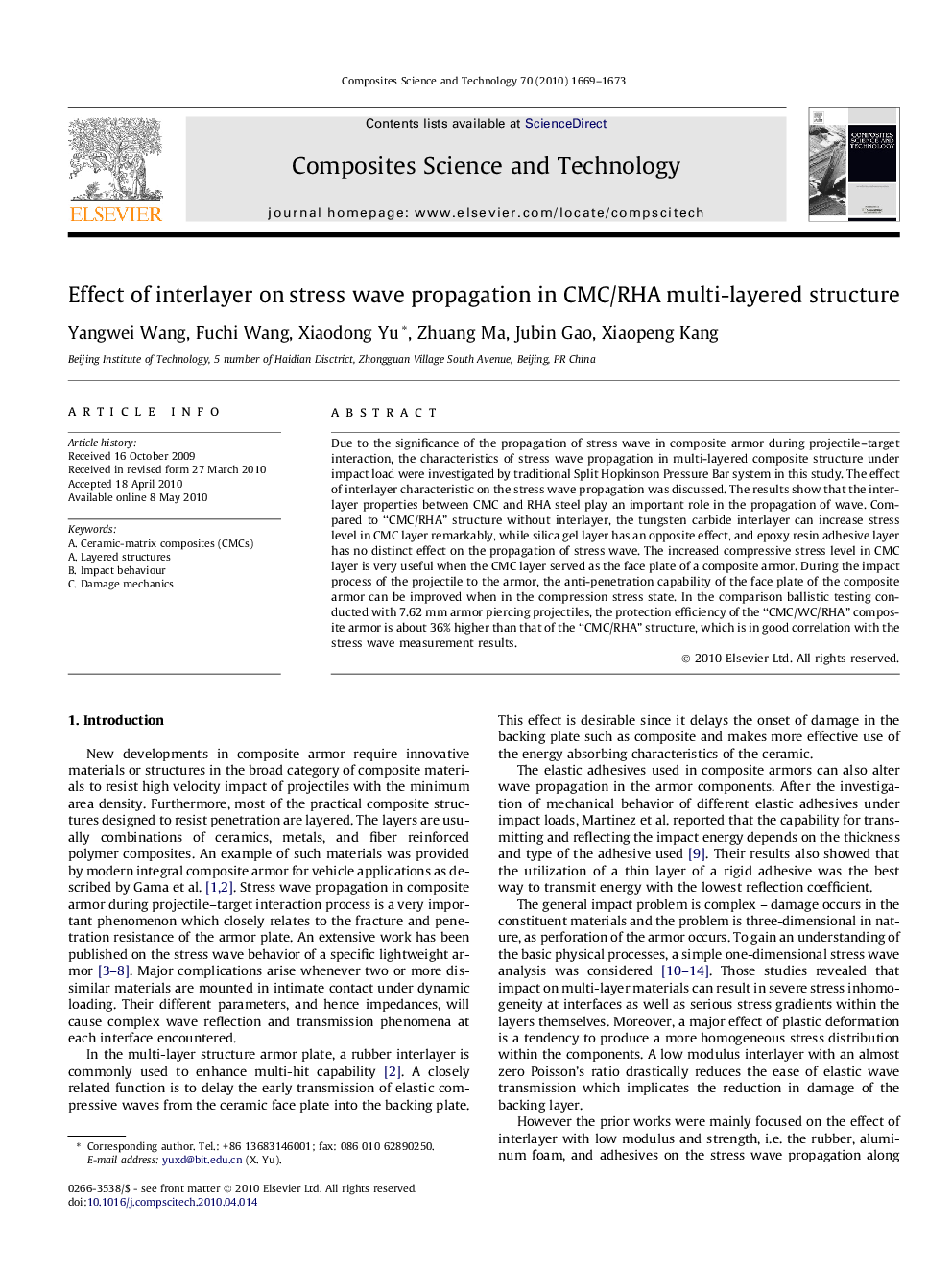| Article ID | Journal | Published Year | Pages | File Type |
|---|---|---|---|---|
| 821254 | Composites Science and Technology | 2010 | 5 Pages |
Due to the significance of the propagation of stress wave in composite armor during projectile–target interaction, the characteristics of stress wave propagation in multi-layered composite structure under impact load were investigated by traditional Split Hopkinson Pressure Bar system in this study. The effect of interlayer characteristic on the stress wave propagation was discussed. The results show that the interlayer properties between CMC and RHA steel play an important role in the propagation of wave. Compared to “CMC/RHA” structure without interlayer, the tungsten carbide interlayer can increase stress level in CMC layer remarkably, while silica gel layer has an opposite effect, and epoxy resin adhesive layer has no distinct effect on the propagation of stress wave. The increased compressive stress level in CMC layer is very useful when the CMC layer served as the face plate of a composite armor. During the impact process of the projectile to the armor, the anti-penetration capability of the face plate of the composite armor can be improved when in the compression stress state. In the comparison ballistic testing conducted with 7.62 mm armor piercing projectiles, the protection efficiency of the “CMC/WC/RHA” composite armor is about 36% higher than that of the “CMC/RHA” structure, which is in good correlation with the stress wave measurement results.
